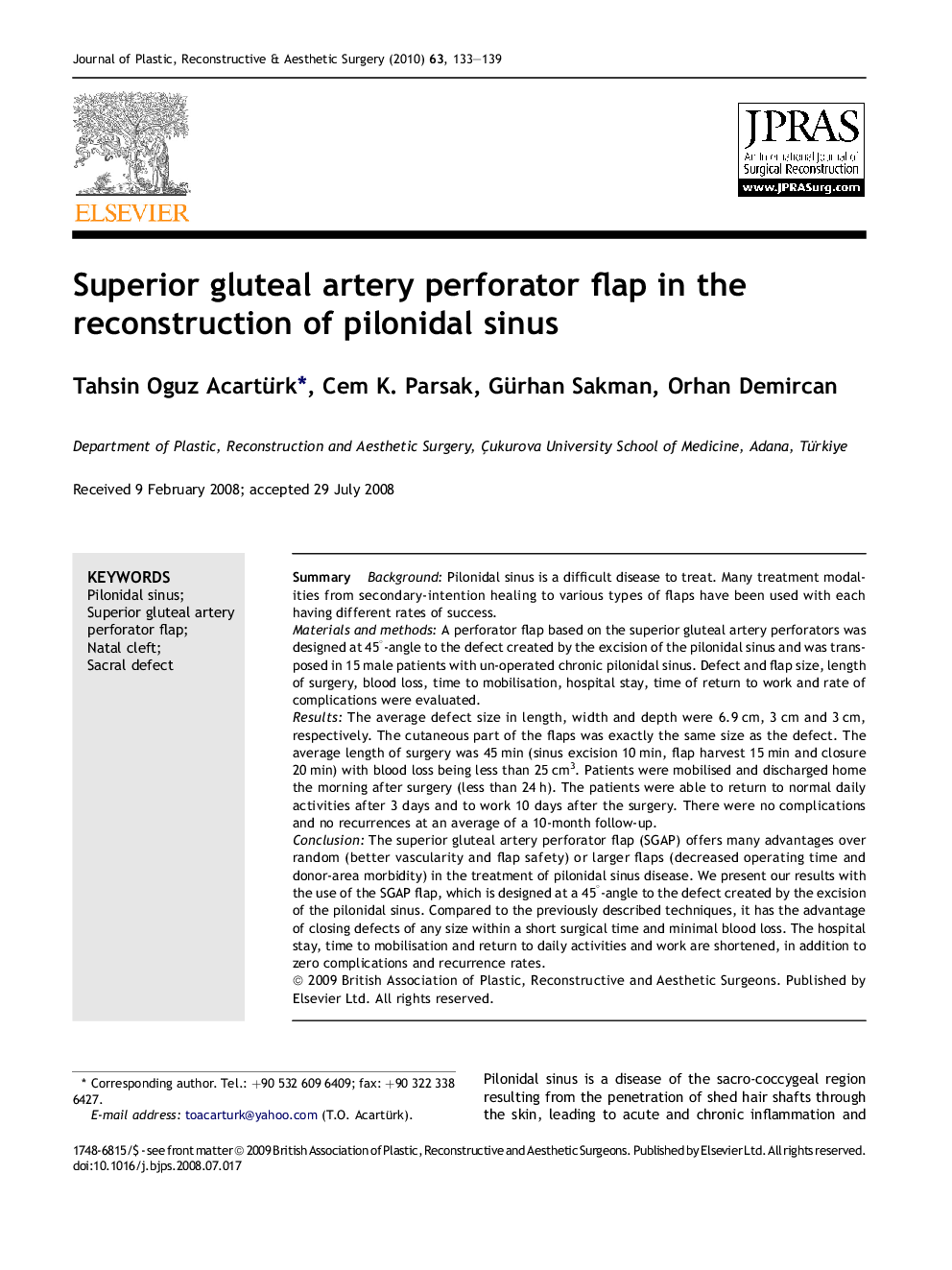| Article ID | Journal | Published Year | Pages | File Type |
|---|---|---|---|---|
| 4121319 | Journal of Plastic, Reconstructive & Aesthetic Surgery | 2010 | 7 Pages |
SummaryBackgroundPilonidal sinus is a difficult disease to treat. Many treatment modalities from secondary-intention healing to various types of flaps have been used with each having different rates of success.Materials and methodsA perforator flap based on the superior gluteal artery perforators was designed at 45°-angle to the defect created by the excision of the pilonidal sinus and was transposed in 15 male patients with un-operated chronic pilonidal sinus. Defect and flap size, length of surgery, blood loss, time to mobilisation, hospital stay, time of return to work and rate of complications were evaluated.ResultsThe average defect size in length, width and depth were 6.9 cm, 3 cm and 3 cm, respectively. The cutaneous part of the flaps was exactly the same size as the defect. The average length of surgery was 45 min (sinus excision 10 min, flap harvest 15 min and closure 20 min) with blood loss being less than 25 cm3. Patients were mobilised and discharged home the morning after surgery (less than 24 h). The patients were able to return to normal daily activities after 3 days and to work 10 days after the surgery. There were no complications and no recurrences at an average of a 10-month follow-up.ConclusionThe superior gluteal artery perforator flap (SGAP) offers many advantages over random (better vascularity and flap safety) or larger flaps (decreased operating time and donor-area morbidity) in the treatment of pilonidal sinus disease. We present our results with the use of the SGAP flap, which is designed at a 45°-angle to the defect created by the excision of the pilonidal sinus. Compared to the previously described techniques, it has the advantage of closing defects of any size within a short surgical time and minimal blood loss. The hospital stay, time to mobilisation and return to daily activities and work are shortened, in addition to zero complications and recurrence rates.
